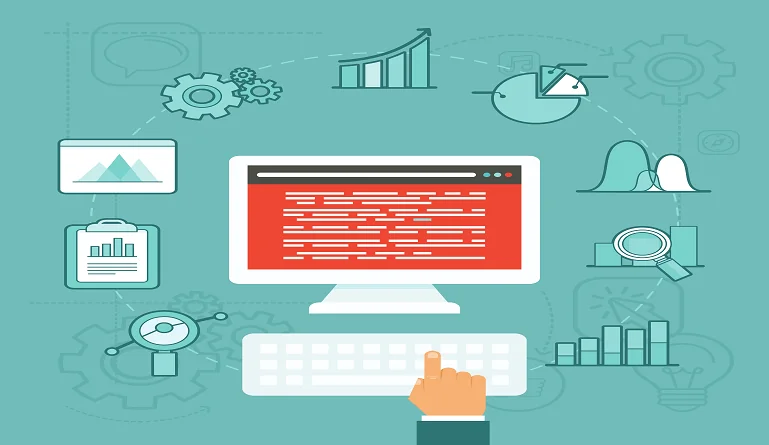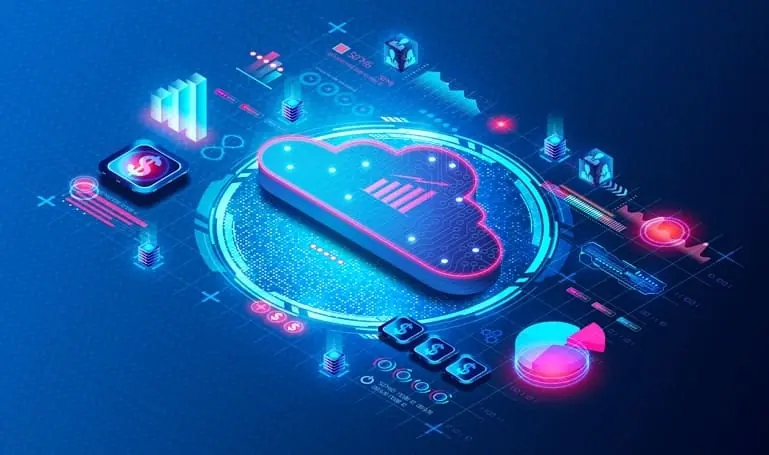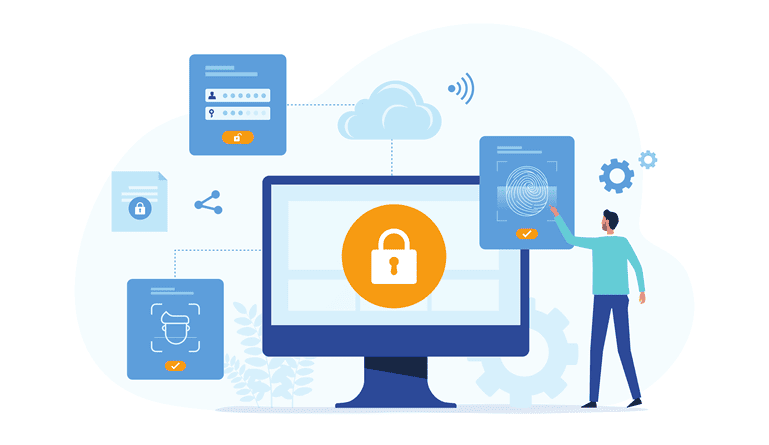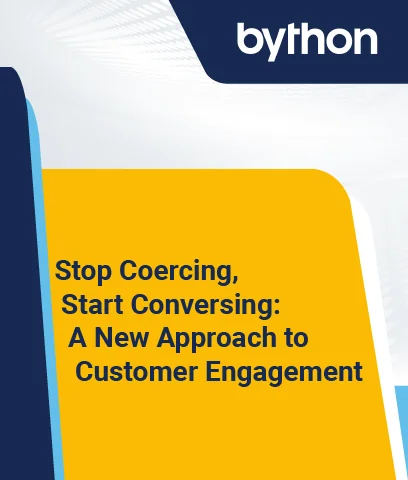Forecasting shapes the future of the tech industry. It guides innovation, investment, and strategy. Consider these questions:
- How can tech companies stay ahead in a fast-changing market?
- What drives successful product launches and market expansions?
- Why do some tech giants thrive while others fade away?
The answer often lies in solid forecasting. Smart predictions help firms spot shifts early, allocate resources wisely, and catch new trends.
The sheer volume and velocity of data may overwhelm old-school forecasting approaches. Big data analytics offers a solution by transforming vast information into valuable, actionable insights.
In this blog, we’ll examine the potential of big data, real-world applications, and future trends. Whether you’re a tech professional or an industry observer, you’ll gain valuable insights into this powerful approach.
- Definition of Big Data
- The Role of Big Data in Forecasting
- Techniques and Tools for Effective Big Data Forecasting
- Advantages & Challenges
- Strategies to Overcome Big Data Forecasting Challenges
- Ethical Considerations in Big Data Forecasting
- How Regulatory Changes Affect Big Data Forecasting
- Emerging Trends in Big Data Forecasting for the Tech Sector
What is Big Data?
Big data is more than just a massive collection of information. It’s characterized by what experts call the “5 Vs”:
- Volume: The sheer amount of data, often so large that it’s measured in terabytes or even petabytes.
- Velocity: How quickly new data is created and circulated.
- Variety: The many different data types, from neatly organized databases to messy social media posts.
- Veracity: How trustworthy and accurate the data is.
- Value: The useful insights and benefits from analyzing all this information.
Where does all this data come from? It’s everywhere. It can be from social media, which gives us a window into consumer thoughts and behaviors. You can find it in smart home devices and other IoT gadgets that constantly track how we use them. There are customer reviews that tell us directly what people think about products, or website analytics showing how users interact with online platforms. Even broader market reports and financial data help paint the big picture of industry trends. All these sources combine to give companies a rich, detailed view of their business landscape.
Companies use special big data tools and technologies to handle this flood of information. Some popular ones are:
- Hadoop: An open-source framework for storing and processing large data sets
- Apache Spark: A fast and general engine for big data processing
- Data visualization software tools: Programs that turn complex data into easy-to-understand charts and graphs
These tools turn raw numbers into valuable insights to guide business decisions and improve forecasting accuracy.
Understanding the Role of Big Data in Forecasting
Big data has transformed forecasting in the tech industry. It allows companies to make more accurate big data predictions by analyzing vast amounts of information from various sources. This improved accuracy comes from spotting patterns and trends that might be missed with smaller data sets.
Predictive analytics play a vital role in this process. It uses historical data, statistical algorithms, and machine-learning techniques to identify the likelihood of future outcomes. For tech companies, this means they can better predict things like product demand, market trends, and customer behavior.
Here are real-world examples that show how big data forecasting makes a difference:
-
Netflix
Netflix doesn’t just guess which shows will be hits. They use viewing history, search queries, and even the time of day that users watch to predict content popularity. This data-driven approach helps them decide what to produce or license, leading to a successful series stream that keeps subscribers hooked.
-
Intel
Intel, the chip-making giant, leverages big data to fine-tune its production levels. They can adjust their output by analyzing market trends, customer orders, and even social media sentiment to avoid costly overproduction or frustrating shortages.
-
Apple
Apple leverages big data for forecasting. They analyze data from their app store, device usage, and market research to predict which features will be most popular in future products. This informs their product development decisions, helping them stay ahead in the competitive tech market.
These cases show how big data forecasting gives tech companies a competitive edge. It allows them to make smarter decisions, reduce risks, and respond quickly to market changes. As more data becomes available and analysis techniques improve, the role of big data in tech industry forecasting will only grow.
(Also Read: Forecasting Tools and Techniques in Strategic Management)
Techniques and Tools for Big Data Forecasting
The process of big data forecasting involves several key strategies and tools. Let’s break it down:
-
Data Collection and Preprocessing:
Consider this like preparing ingredients before cooking a gourmet meal. Raw data from various sources needs to be cleaned and organized. Tools like Apache Nifi and Talend help streamline this process and ensure the data is primed for analysis.
-
Machine Learning Algorithms:
These turn raw ingredients into something valuable. Some key techniques include:
- Regression analysis: This technique helps predict future values based on past data. It helps forecast sales or user growth.
- Time series analysis: This method analyzes collected data to identify trends and seasonal patterns. It’s beneficial for predicting cyclical market trends.
- Clustering: This algorithm groups similar data points, helping companies segment their market or identify distinct customer behaviors.
Popular tools for implementing these algorithms include Python libraries like Scikit-learn and TensorFlow and cloud-based services like Amazon SageMaker and Google Cloud AI Platform.
-
Data Visualization:
Data visualization helps make complex data understandable and actionable. Tools like Tableau and Power BI turn data into clear, interactive charts and graphs. This allows decision-makers to grasp trends and patterns quickly, even if they’re not data experts.
For example, a tech company might use Tableau to create a dashboard showing predicted product demand across different regions. This visual representation makes it easy to spot areas of high potential or possible supply chain issues.
Benefits of Leveraging Big Data for Tech Industry Forecasting
Big data forecasting offers several critical advantages for the tech industry, helping companies stay competitive and make informed decisions.
-
Improved Decision-Making
Improved decision-making is a primary advantage. Big data provides a broader and deeper view of market conditions, allowing leaders to make decisions based on facts rather than intuition. For instance, a smartphone manufacturer might use data to decide which features to include in their next model.
-
Accurate Market Trend Analysis
More accurate market trend analysis becomes possible with big data. Companies can:
- Process vast amounts of information from various sources
- Spot emerging trends early
- Adapt strategies quickly
One example you can consider is a software company, which might detect rising interest in a specific type of application. They can allocate resources to develop a product in that category before competitors do.
-
Enhanced Risk Management
Enhanced risk management is another crucial benefit. Companies can identify and prepare for potential risks by analyzing historical data and current market conditions. This might involve:
- Predicting supply chain disruptions
- Anticipating cybersecurity threats
- Forecasting shifts in consumer behavior
Tech firms can develop contingency plans and mitigate risks before they become significant problems with this knowledge.
-
Improved Operational Efficiency
Improved operational efficiency gets a boost from big data forecasting. By predicting demand more accurately, companies can:
- Optimize production schedules
- Manage inventory more effectively
- Allocate resources efficiently
This leads to cost savings and improved productivity. A good example would be a cloud services provider using big data to forecast server demand. This allows them to scale their infrastructure efficiently.
-
Increased Customer Satisfaction
Customer satisfaction often improves as a result of better forecasting. When companies can anticipate customer needs and preferences, they can:
- Tailor products and services more effectively
- Provide personalized experiences
- Respond quickly to changing market demands
As a result, companies can experience higher customer satisfaction and loyalty, giving tech firms a competitive edge.
Challenges in Implementing Big Data Forecasting
Despite the many advantages of big data forecasting, tech organizations frequently need help implementing these systems.
-
Data Quality and Integration
Inconsistencies and errors in data from various sources create significant challenges. Companies struggle with the complexity of merging diverse data sets, and the process of creating a cohesive whole for analysis is often time-consuming and resource-intensive.
-
Privacy and Security Concerns
Compliance with regulations like GDPR or CCPA is a major concern. Companies must focus on protecting data from breaches to maintain customer trust and avoid legal consequences. It often requires substantial investments in security measures and protocols.
-
Skill Gap
Many organizations are hindered by a shortage of professionals with big data expertise. Finding and retaining skilled data scientists is difficult in a competitive job market. This skill gap can significantly slow down the implementation of effective forecasting systems.
-
Scalability Issues
The need for constant infrastructure upgrades poses a significant challenge. As data volumes grow, companies face costly changes to existing systems. Handling these increasing data loads requires careful planning and substantial resources.
-
Result Interpretation
There’s a risk of identifying meaningless correlations in big data analyses. It can lead to potential misguided decisions if not properly understood. The complexity of understanding and applying insights correctly requires expertise and careful consideration.
Overcoming these obstacles is crucial for companies to fully leverage the power of big data in their forecasting efforts.
(Also Read: Forecasting Methods in Marketing)
Overcoming Challenges in Big Data Forecasting
Tech companies can implement several strategies to address the challenges of big data forecasting.
Here are some of them:
- Invest in robust data governance frameworks to improve data quality and integration. Establish clear standards, use data cleansing tools, and implement efficient integration platforms.
- Develop comprehensive data protection policies to manage privacy and security concerns. Use encryption, access controls, and regular audits to ensure compliance with regulations.
- Address the skill gap by focusing on hiring and training. Partner with universities, offer ongoing training programs, and consider automated machine learning tools to make data analysis more accessible.
- Adopt cloud-based solutions and implement data archiving strategies to tackle scalability issues and manage growing data volumes effectively.
- Foster collaboration between data scientists and domain experts to improve result interpretation. Use advanced visualization tools to make complex data more understandable to decision-makers.
These solutions enable tech companies to overcome major hurdles in big data forecasting and harness their full potential for accurate industry predictions.
The Role of Data Ethics in Big Data Forecasting
Ethical considerations are paramount when using big data for forecasting in the tech industry. Key issues include protecting individual privacy, ensuring informed consent, and preventing algorithmic bias. Implementing transparent data practices and maintaining diverse analysis teams are crucial to addressing these ethical challenges.
The Impact of Regulatory Changes on Big Data Forecasting
Data protection regulations like GDPR and CCPA have significantly altered forecasting processes in the tech sector. These changes have forced companies to revise their data handling procedures and adapt their forecasting models. While compliance presents challenges, it often leads to improved data quality and more robust forecasting practices.
Future Trends in Big Data Forecasting for the Tech Industry
The future of big data forecasting in the tech industry looks promising, with several emerging trends.
AI and machine learning advancements will play a crucial role. These technologies will enable more accurate predictions by identifying complex patterns in vast datasets. Automated machine learning tools will make sophisticated analysis accessible to a broader range of professionals.
Real-time data processing will become increasingly important. Tech companies will shift towards streaming analytics, allowing for instant insights and faster decision-making. This will be particularly valuable in rapidly changing markets.
The volume and variety of data will also increase dramatically as IoT devices become more prevalent. This will offer richer insights and present data management and analysis challenges. Edge computing will reduce latency and enable faster insights, particularly useful for applications requiring immediate responses.
As these trends evolve, tech companies will need to stay adaptable and continuously update their forecasting methods and tools to remain competitive in an increasingly data-driven industry.
Final Thought
Big data forecasting has transformed the tech industry by empowering companies to make more accurate predictions and stay competitive. We’ve explored its benefits, from improved decision-making to enhanced operational efficiency, while addressing challenges like data quality and privacy concerns. The future looks promising, with AI, IoT, and real-time processing set to revolutionize the field further.
For tech companies looking to stay ahead, embracing big data forecasting isn’t just an option – it’s necessary. Consider exploring online courses on data science, industry reports from research firms, whitepapers from tech giants, and local tech meetups. Take the first step today towards more accurate and insightful tech industry forecasting. Your company’s future may depend on it.







